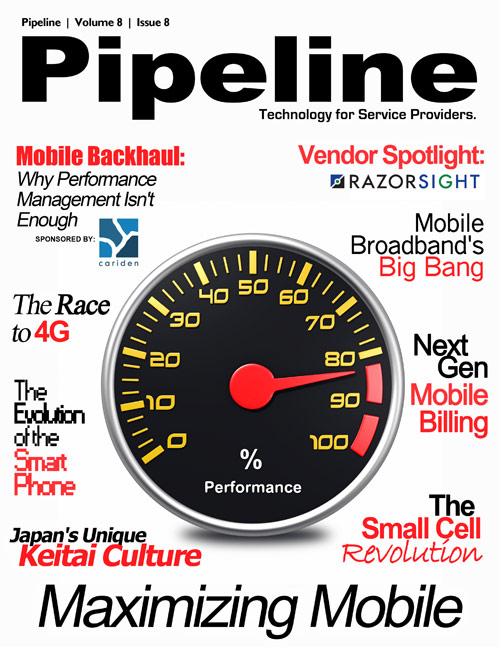There are several steps carriers can take that will have a profound effect on the perceived value of their 4G networks:
- Promote greater availability of LTE- enabled user devices
- Accelerate all-IP network evolution
- Implement dynamic policy control
- Push fiber as close to the cell site as possible
- Deploy OSS service assurance
- Intensify backhaul solutions
Also, as I explain in another article this month, small cell deployments as part of a heterogeneous network are critical to 4G deployments, as they rapidly address scalability, capacity, and cost needs.
How Can CSPs Sell 4G?
There are many, many advantages to a fourth-generation network, even before it meets the ITU speed test, but market confusion has impacted CSPs ability to sell 4G services. “In this reality, no wonder consumers are frustrated,” said Jonathon Grodon. “They are asked to pay more for no added value. What compromises the brand identity of 4G is not its poor performance, but its inadequate pricing models. Selling bits and bytes simply doesn’t cut it anymore. Strand Consult is predicting pricing model failure, suggesting that, "any operators that believe they can increase prices by [simply] introducing LTE are in our opinion naïve."


I would argue that customers derive value from services and devices that meet their needs, not network claims. As a result, modeling marketing and charging around value seems the best strategy. Unfortunately, many carriers are still marketing the very thing that threatens to commoditize them: their pipes.
As Russ Hamilton explained, there might not be a big value proposition around a service like Facebook when comparing 3G to 4G but, “other consumer and commercial services such as video conferencing and web-meeting apps have a significantly different experience when making the leap from 3G to 4G.”
Again, Jonathon Gordon provides valuable insight: “LTE represents an opportunity for operators to come up with charging innovation and value-based pricing. Services like HD video, content (revenue-sharing) partnerships or operator-billing for OTT, deliver added value for which subscribers would be much more inclined to pay.”
Not only is innovation in charging and partnerships exciting, it's critical for those CSPs who stay afloat. Why? It goes back to the OTT threat. “With its fully IP-based architecture, LTE networks are expected to bring OTT players into the video and voice delivery services,” predicts Miguel Carrero, Director, Communications, HP Enterprise Services. “So, an OTT firm may offer voice communication or video services to the mass market.”
Doing 4G Right
Fourth-generation is real, and it will be a game changer, but there is a mountain of work for carriers to do before they can cash in on the promise of 4G and rescue the term from its abusive relationship with marketing. While considerable network upgrades must occur, so must the way in which the services themselves that are enabled by 4G are marketed, bundled, billed, and monitored. Intelligent traffic management will permit operators to do more with less. Backhaul solutions that get traffic off the cell site as rapidly as possible must be implemented. Accelerating the move to all-IP and making partnership deals with other service providers is crucial. And as Jonathon Gordon said, “QoE is no longer nice-to-have, but a differentiating MUST.”








